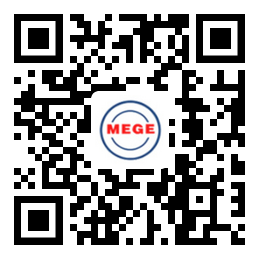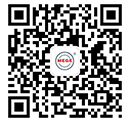MxV Rail Research –– Flange Bearing Frog Crossing Performance Issues
27 Dec,2023

Over the past 15 years of safe revenue service operations, MxV Rail engineers, railroad standards engineers, and special trackwork suppliers have gained valuable experience and insight into flange bearing frog (FBF) design, and common degradation modes of FBF crossings have been identified. Compared to conventional crossing diamonds, FBF crossings have reduced wheel/rail impact forces and have reduced the occurrence of speed restrictions.1,2 As the industry moves to the next generation of FBF designs, the lessons learned from past observations will help improve the safety and economic performance of crossings in the future. This article provides a brief description of the design issues associated with FBFs and potential solutions.
Flange bearing surface wear (metal flow and wear)
The transition from tread bearing (TB) to flange bearing (FB) can be a significant loading event for the crossing. Due to the differences in rolling radius, the wheelset’s rotation speed will decrease when going from TB to FB. While the wheelset’s forward speed does not change, its rotation rate will be affected, which can result in high wheel/rail surface forces as the wheelset rotation slows down or speeds up as a result of transitioning from tread to flange and back. In addition, FB can result in a dynamic load on the wheel flange as the wheel encounters the FB ramp in the diamond. This is a very demanding application for frog materials. An effort to find and/or develop improved material for FBF crossings is needed. The performance requirements for FB material have been described in previous MxV Rail Technology Digests.1,3
By including a larger vertical wear allowance in the FB surface, a longer service life is possible. For the current tread rail-FB bar design, this can be achieved by raising the FB bar to be level with the TB rail (see Figure 1). Making this design change could extend the wear life of the frog material; however, the ramp design may also be affected.
Due to the shapes involved, FB is much more concentrated over the width of the wheel flange (as opposed to TB, which can spread over the width of the wheel tread). A key to lengthening the service life of any FBF material will be determining a way to spread flange contacts laterally in the diamond. This suggests that the “flangeway” should be wider, with face gage being well below the maximum allowed in the track safety standards.
The contact stresses for FB can be lowered by making the running surface more conformal when it is new. An analysis of worn profiles from FB diamonds showed that wheel flanges worn from FB typically have a tip radius in the range of 0.6 to 0.8 inch. The ideal frog running surface shape is an elongated groove with corners having this radius.1 Sharp edges at the shoulders of the groove should be avoided. Figure 2 shows the general shape of the recommended FB surface.
Uneven wear of the FB surface (longitudinally)
The design of the ramps that transition wheels from TB to FB contributes to the uneven wear of the FB bars. The number of FB wheels in the ramps increases toward the center of the crossing, contributing to longitudinally uneven wear. More importantly, the elevation changes that some wheels experience during the transition result in dynamic loading of the FB bars. Therefore, it is imperative that humps and dips be ground out of FB running surfaces as they occur.
Current ramp design includes the use of discrete plates and linear sloped ramps. Ramps with vertical curves4 can be used to reduce dynamic loading from suspension effects. Other methods that minimize dynamic loading include using multiple tie plates and foundation damping with either rail seat pads or under-tie pads.5 These methods should also help reduce surface deviations.
Maintainability
To minimize dynamic loading, the FB surfaces should have no vertical or lateral discontinuities. Currently, replacing a FB bar requires considerable effort to disassemble a significant portion of the crossing. Additionally, the transition from new to worn components must be made at the joints, which can be problematic if components are not replaced simultaneously due to a reluctance to grind down the ends of new components. The current practice of replacing one rail at a time can create large rolling radius differences for wheelsets. These differences can result in adverse steering and accelerated component wear. Therefore, additional research is needed to develop a design and/or method for more rapid component replacement. One method would be to use a system of shims and milled seat platework to allow adjustability when installing replacement sections. Additionally, a reliable method for building up the FB running surfaces should facilitate height matching with replacement components. Finally, the isolation of the tread rails in the diamond from the surrounding track will eliminate the longitudinal stress issues currently seen. Some railroads have installed rail expansion joints near crossing diamonds in an attempt to reduce the rail longitudinal forces acting on crossings and thereby reduce component maintenance.
Guard rail wear (from non-centered running)
The inner guard rail wear that occurs on some FBF crossings is related to the ability of wheelsets to track straight. Contributing factors include the proximity of the diamond to curves (see Figure 3), uneven wear and surface in the diamond, and a difference in flange heights on a wheelset affecting the ability to travel straight.
The main function of a guard rail in a crossing is to ensure a vehicle takes the intended route through a frog. This safety function of the guard rail is of prime importance. Some railroads have chosen to use higher hardness guard rails in an attempt to reduce wear.
FB Bar Failures
FB Bar Transverse Breaks
A trade-off between strength and ductility in materials can manifest as component breakage versus component wear. The use of harder, more wear-resistant materials can result in more component fractures. Since a longer wear life is needed, the following design issues should be considered when using high hardness steels: 1) reduction of longitudinal forces, 2) uniform support to reduce vertical bending stresses, 3) optimized stiffness and damping of the diamond, and 4) running surface designs that reduce dynamic loading.
FB Bar Longitudinal Cracks (Edge Cracks from Non-Centered Running)
Longitudinal cracking of FB bars has been observed in cases where the wheel wear band gets too close to a lateral edge of a bar. This tends to occur when wheelsets are not centered. A review of the design dimensions for FB was conducted after it was observed in the field that more locations had guard wear than tread rail lateral wear. The analysis showed that FB bars were spaced appropriately for the nominal narrow flange wheelset. Therefore, the issue is likely related to vehicle steering while FB, as well as to the width of the FB bars that is required to mitigate edge effects. This issue should be studied analytically and in a controlled testing environment.
The need to keep the FB ramps parallel has been understood from the beginning of FB frog design. Adverse steering will result when one wheel of a wheelset is FB and the other wheel is TB,2 or if the flange heights of the two wheels in a wheelset are different. This can cause edge loading on the FB bars, which can result in the longitudinal cracking observed.
Another important consideration is lateral support for the FB bars. The raised guard rails on the gage side of the FB bars provide less lateral support for the bars than do the tread rails on the field side.
Joint degradation
Chip-outs of the running surface due to plastic flow at joints have been a relatively minor issue with most joints exhibiting no chipping. Good joint practices should be followed by making the joints as tight as possible. Slotting, when necessary, should be vertical, with as little running surface height difference as possible.
Conclusions
In comparison to conventional crossings, FBF crossings have reduced wheel/rail impact forces and reduced speed restrictions. Improvements in the areas of FB running surfaces, and adverse vehicle steering have the potential to provide further benefits for future FBF crossings.












